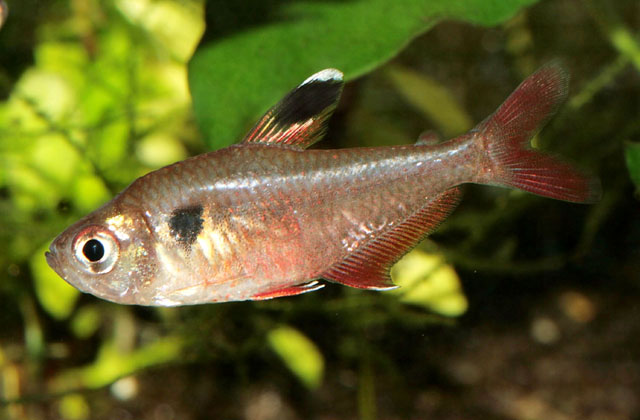| Characidae (Characins; tetras), subfamily: Stethaprioninae |
| 3.67 cm SL (male/unsexed) |
|
pelagic; freshwater |
| South America: Bolivia. |
|
Dorsal soft rays (total): 8-9; Anal soft rays: 22-25; Vertebrae: 34-34. This species is distinguished by the following characters: upper jaw with 2 rows of teeth; no scales on caudal-fin; incomplete lateral line; deep body, red in colour, with a black humeral and dorsal spot, anterior and posterior margined by a light zone. Also characteristic to this species are 6-10 conical to tricuspid teeth on the inner row of the premaxillary; 1-4 conical teeth on the outer row; 5-8 conical to tricuspid teeth on the maxillary; 8 gill rakers on dorsal limb, 13 on ventral; a black dorsal spot converges ventrally to a more or less rounded tip. H. werneri and H. epicharis have similar tooth pattern and a distinct black humeral spot; however, both have a long horizontally extended humeral spot and prolonged dorsal fins in males (vs. a round spot often with small expansions above and below and a short dorsal fin in the H. pando). H. pando differs in having a well developed infraorbital 4 vs. reduced to the laterosensory channel without dermal bones in H. werneri and, white tips of anterior rays of the pelvic and anal fins vs. coloured in H. epicharis (Ref. 82662). |
| Collected from a blackwater river with no aquatic plants, except for bladderwort Utricularia; pH 5.9 and conductivity of 15 μS/cm (Ref. 82662). |
|
Least Concern (LC); Date assessed: 21 April 2014 Ref. (130435)
|
| harmless |
Source and more info: www.fishbase.org. For personal, classroom, and other internal use only. Not for publication.

